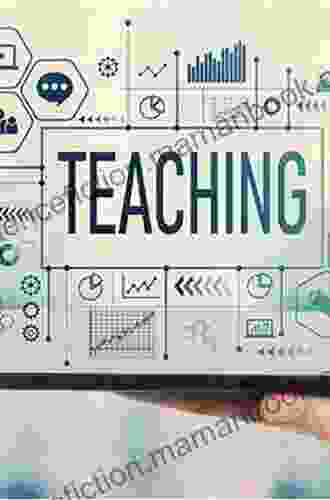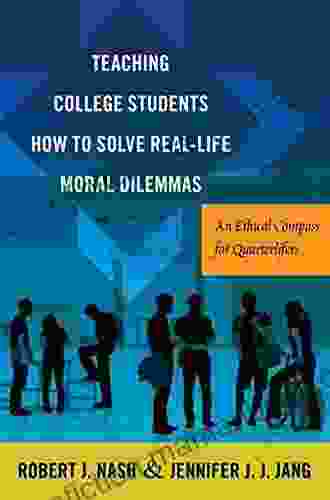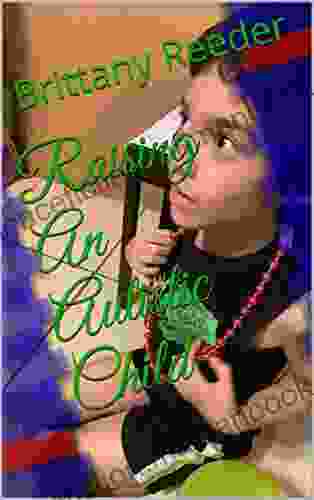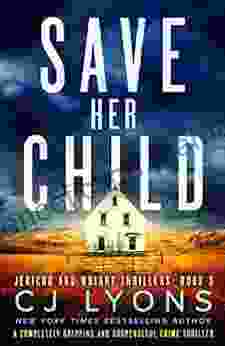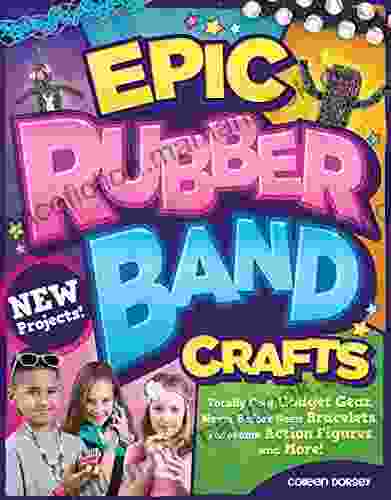Curriculum Planning and Strategies: A Comprehensive Guide

5 out of 5
| Language | : | English |
| File size | : | 8690 KB |
| Text-to-Speech | : | Enabled |
| Screen Reader | : | Supported |
| Enhanced typesetting | : | Enabled |
| Word Wise | : | Enabled |
| Print length | : | 212 pages |
Curriculum planning and strategies are essential for ensuring that students receive a well-rounded and effective education. A well-planned curriculum will provide students with the knowledge and skills they need to succeed in school and beyond. It will also help teachers to organize their instruction and to track student progress.
Types of Curricula
There are many different types of curricula, each with its own unique advantages and disadvantages. Some of the most common types of curricula include:
- Subject-centered curricula: These curricula focus on teaching specific subjects, such as math, science, and English. They are often used in traditional schools, and they can be effective in providing students with a strong foundation in the core academic areas.
- Child-centered curricula: These curricula focus on the needs and interests of the child. They are often used in preschools and kindergartens, and they can be effective in helping children to develop their social, emotional, and cognitive skills.
- Integrated curricula: These curricula combine elements of subject-centered and child-centered curricula. They are often used in elementary schools, and they can be effective in providing students with a well-rounded education that meets their individual needs.
- Thematic curricula: These curricula are organized around themes, such as "The Human Body" or "The American Revolution." They are often used in middle schools and high schools, and they can be effective in engaging students and helping them to make connections between different subjects.
Steps in Curriculum Development
The process of curriculum development involves several steps, including:
- Needs assessment: The first step in curriculum development is to conduct a needs assessment. This will help you to identify the needs of your students and to determine what they need to learn.
- Goal setting: Once you have identified the needs of your students, you can begin to set goals for your curriculum. These goals should be specific, measurable, achievable, relevant, and time-bound.
- Content selection: The next step is to select the content that you will teach in your curriculum. This content should be aligned with your goals and objectives, and it should be appropriate for the age and level of your students.
- Organization: Once you have selected the content for your curriculum, you need to organize it into a logical sequence. This will help your students to learn the material in a way that makes sense.
- Implementation: The final step in curriculum development is to implement your curriculum. This involves teaching the content to your students and assessing their learning.
Curriculum Strategies
There are many different strategies that you can use to engage students and improve learning outcomes. Some of the most common strategies include:
- Active learning: Active learning is a teaching method that encourages students to take an active role in their learning. This can be done through a variety of activities, such as group projects, simulations, and role-playing.
- Differentiated instruction: Differentiated instruction is a teaching method that tailors instruction to the individual needs of students. This can be done through a variety of strategies, such as providing students with different levels of support, offering different types of activities, and allowing students to learn at their own pace.
- Technology integration: Technology can be used to enhance learning in a variety of ways. Some of the most effective ways to use technology in the classroom include using interactive whiteboards, online simulations, and educational games.
- Assessment: Assessment is an essential part of the learning process. It allows you to track student progress and to make adjustments to your instruction as needed. There are many different types of assessments, such as quizzes, tests, and portfolios.
Curriculum planning and strategies are essential for ensuring that students receive a well-rounded and effective education. By following the steps outlined in this article, you can develop a curriculum that meets the needs of your students and helps them to achieve their full potential.
5 out of 5
| Language | : | English |
| File size | : | 8690 KB |
| Text-to-Speech | : | Enabled |
| Screen Reader | : | Supported |
| Enhanced typesetting | : | Enabled |
| Word Wise | : | Enabled |
| Print length | : | 212 pages |
Do you want to contribute by writing guest posts on this blog?
Please contact us and send us a resume of previous articles that you have written.
 Top Book
Top Book Novel
Novel Fiction
Fiction Nonfiction
Nonfiction Literature
Literature Paperback
Paperback Hardcover
Hardcover E-book
E-book Audiobook
Audiobook Bestseller
Bestseller Classic
Classic Mystery
Mystery Thriller
Thriller Romance
Romance Fantasy
Fantasy Science Fiction
Science Fiction Biography
Biography Memoir
Memoir Autobiography
Autobiography Poetry
Poetry Drama
Drama Historical Fiction
Historical Fiction Self-help
Self-help Young Adult
Young Adult Childrens Books
Childrens Books Graphic Novel
Graphic Novel Anthology
Anthology Series
Series Encyclopedia
Encyclopedia Reference
Reference Guidebook
Guidebook Textbook
Textbook Workbook
Workbook Journal
Journal Diary
Diary Manuscript
Manuscript Folio
Folio Pulp Fiction
Pulp Fiction Short Stories
Short Stories Fairy Tales
Fairy Tales Fables
Fables Mythology
Mythology Philosophy
Philosophy Religion
Religion Spirituality
Spirituality Essays
Essays Critique
Critique Commentary
Commentary Glossary
Glossary Bibliography
Bibliography Index
Index Table of Contents
Table of Contents Preface
Preface Introduction
Introduction Foreword
Foreword Afterword
Afterword Appendices
Appendices Annotations
Annotations Footnotes
Footnotes Epilogue
Epilogue Prologue
Prologue Nevil Shute
Nevil Shute Latica Mcghee
Latica Mcghee Dan Cosley
Dan Cosley Lena Greiner
Lena Greiner Graham Tippett
Graham Tippett Tochi Onyebuchi
Tochi Onyebuchi Burton Raffel
Burton Raffel Harald Bathelt
Harald Bathelt Mikhail Tank
Mikhail Tank Ramona Ausubel
Ramona Ausubel Grace M Jolliffe
Grace M Jolliffe Sade L Collins
Sade L Collins C J Cala
C J Cala Angus Donald
Angus Donald M J Sewall
M J Sewall Juddy Anderson C Punzalan
Juddy Anderson C Punzalan Ian Lord
Ian Lord Emily Fellah
Emily Fellah Dr Shefali Tsabary
Dr Shefali Tsabary Angus Curran
Angus Curran
Light bulbAdvertise smarter! Our strategic ad space ensures maximum exposure. Reserve your spot today!
 Colin FosterFollow ·7k
Colin FosterFollow ·7k Demetrius CarterFollow ·4.5k
Demetrius CarterFollow ·4.5k Paulo CoelhoFollow ·18.5k
Paulo CoelhoFollow ·18.5k Jaylen MitchellFollow ·14.2k
Jaylen MitchellFollow ·14.2k Bobby HowardFollow ·10.3k
Bobby HowardFollow ·10.3k Emmett MitchellFollow ·4.7k
Emmett MitchellFollow ·4.7k Oliver FosterFollow ·7.4k
Oliver FosterFollow ·7.4k Edgar CoxFollow ·12k
Edgar CoxFollow ·12k

 Ashton Reed
Ashton ReedClean(ish) Food for People Who Like to Eat Dirty
By: [Your Name] Are...
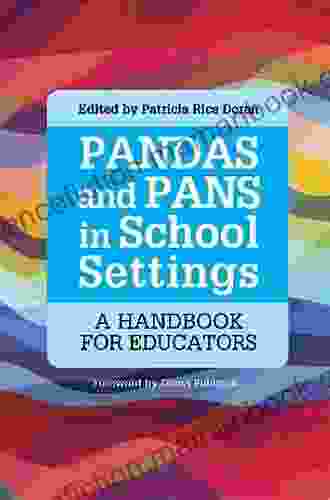
 Ronald Simmons
Ronald SimmonsThe Handbook for Educators: A Comprehensive Guide to...
The Handbook for...

 Derrick Hughes
Derrick HughesAny Place Hang My Hat: A Hauntingly Beautiful Novel by...
A Masterpiece of...

 Adrien Blair
Adrien BlairFly Me to the Moon Vol. 5: A Lunar Odyssey through...
In the vast...

 William Powell
William PowellTips By Gardeners On Variety Of Subjects
Gardening...
5 out of 5
| Language | : | English |
| File size | : | 8690 KB |
| Text-to-Speech | : | Enabled |
| Screen Reader | : | Supported |
| Enhanced typesetting | : | Enabled |
| Word Wise | : | Enabled |
| Print length | : | 212 pages |


